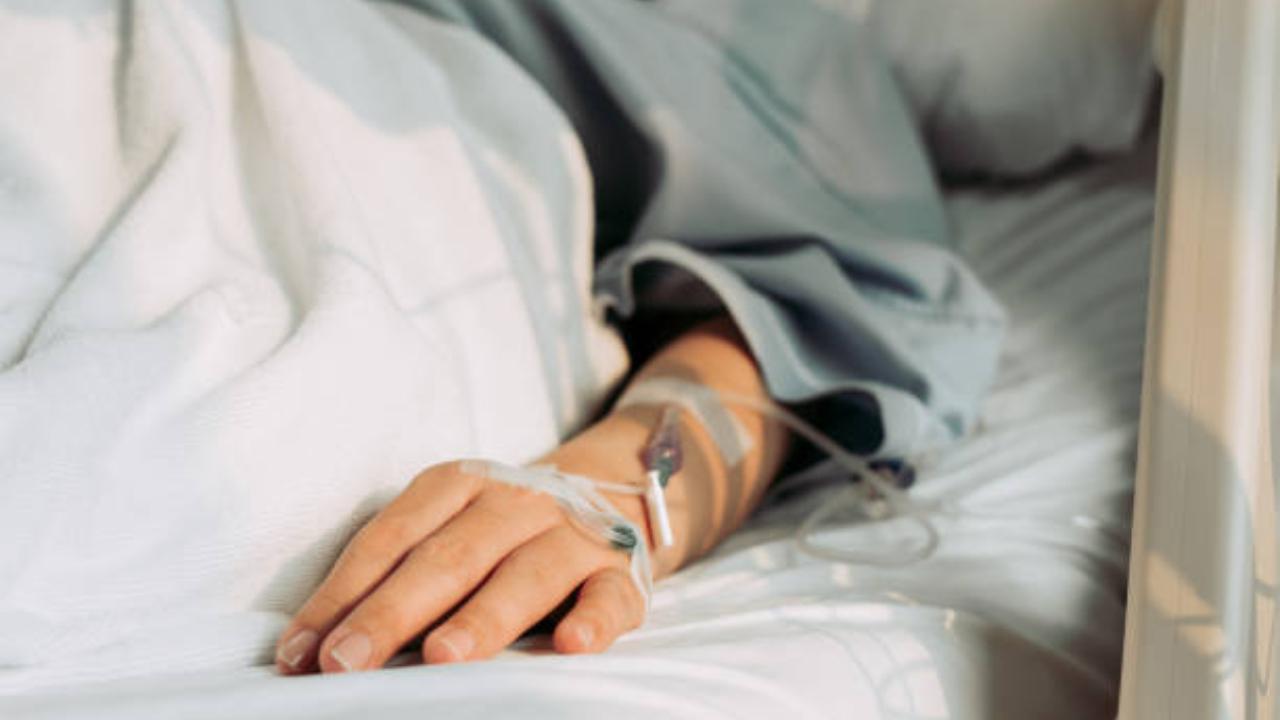Mumbai-based doctors successfully removed over two liters of blood from a woman’s abdomen despite the odds. Here is what happened

Image for representational purposes only. Photo Courtesy: iStock
Mumbai-based housewife Rabia Khan (name anynonymised at request) arrived at Lilavati casualty with difficulty in breathing and giddiness and abdominal pain. On arrival, her pulse was recorded at 130 b / min. BP was 80/60 mm.
ADVERTISEMENT
Upon abdominal examination, there was massive bruising of the anterior abdominal wall suggesting haemorrhage in the wall. Also, all signs of free fluid in the abdomen were positive. Her abdominal USG revealed more than 2 litres of free fluid in her abdomen and a right-sided ovarian mass almost 5cm by 6cm. Her blood investigation revealed a Hb of 5g/dl. Her INR was 10 and her PTT was not recordable. All the coagulation profiles were deranged. Basically, the patient was in DIC and hemorrhagic shock.
Elaborating on her case, Dr Rekha Agrawal, senior honorary consultant in obstetrics and gynaecology, Lilavati Hospital, Bandra, Mumbai informs how the patient had experienced massive intra-abdominal bleeding. “Khan had undergone an aortic valve replacement surgery 4 years ago where she was recommended an anticoagulant medication regimen. The patient however failed to monitor her INR (international normalised ratio) regularly which resulted in her condition.”
Also read: Monsoon illnesses: Vaccines and diet tips for women to combat lupus, arthritis
With the help of haematologist Dr Abhay Bhave and intensivist Dr Srinivasan, packed cells factor Nova 7 and FFP were transfused. The patient was admitted at 11 pm she was even bleeding from an arterial puncture. Her entire abdomen was bruised with signs of intra-abdominal bleeding. She was suffering from early disseminated intravascular coagulation (DIC), a rare and nearly fatal blood clotting disorder where the body consumes all clotting factors. Because of this consumption, coagulopathy blood does not clot if not treated in time, patient can bleed from all mucous membranes.
When one gets hurt, the clotting factors play a crucial role in stopping the bleeding. These clotting factors are consumed rapidly if there is bleeding inside the body. There was internal bleeding in her abdomen, causing all the clotting factors to be fully utilised. Her blood had become so thin that any test or procedure could result in bleeding from the puncture site of her body, adds Agarwal.
She continues, “The goal was to normalise her INR so that we could do laparoscopic surgery and stem the bleeding. However, it was a race against time. In the next 1/2 hours, the patient's haemoglobin plunged to 4.5. She received 8-10 fresh frozen plasma, packed blood cells. platelet infusions and Nova 7 over six hours. This brought her blood levels to a safe range for surgery.”
Under the expert anaesthetic team of Lilavati, Agarwal performed laparoscopic surgery (keyhole surgery,) which minimises the time of surgery and the morbidity accompanied by open surgery. During the laparoscopic surgery, it was discovered that she was bleeding from a haemorrhagic ovarian cyst, which had caused 2 liters of blood to accumulate in her abdomen.
The bleeding ovary and fallopian tube were excised, and the abdomen was cleared of all free blood. A total of 2.2 liters of blood was successfully removed, effectively stopping the bleeding. Her clotting profile returned to normal. Within the next 48 hours, she made a full recovery and is now ready for discharge. Upon discharge, the patient has been advised to carefully monitor her INR and follow up closely with her cardiologist. Her hemoglobin level at discharge was 8 g/dL, and she has been given an IV infusion of 1000 mg of Ferric Carboxymaltose to replenish her iron stores.
“As I heard the words intra-abdominal bleeding, I panicked. However, the team of doctors worked tirelessly to stabilise me and assist me in fighting against the odds,” concluded Khan.
Also read: Thane road ‘disappears’ weeks after being repaired
 Subscribe today by clicking the link and stay updated with the latest news!" Click here!
Subscribe today by clicking the link and stay updated with the latest news!" Click here!







